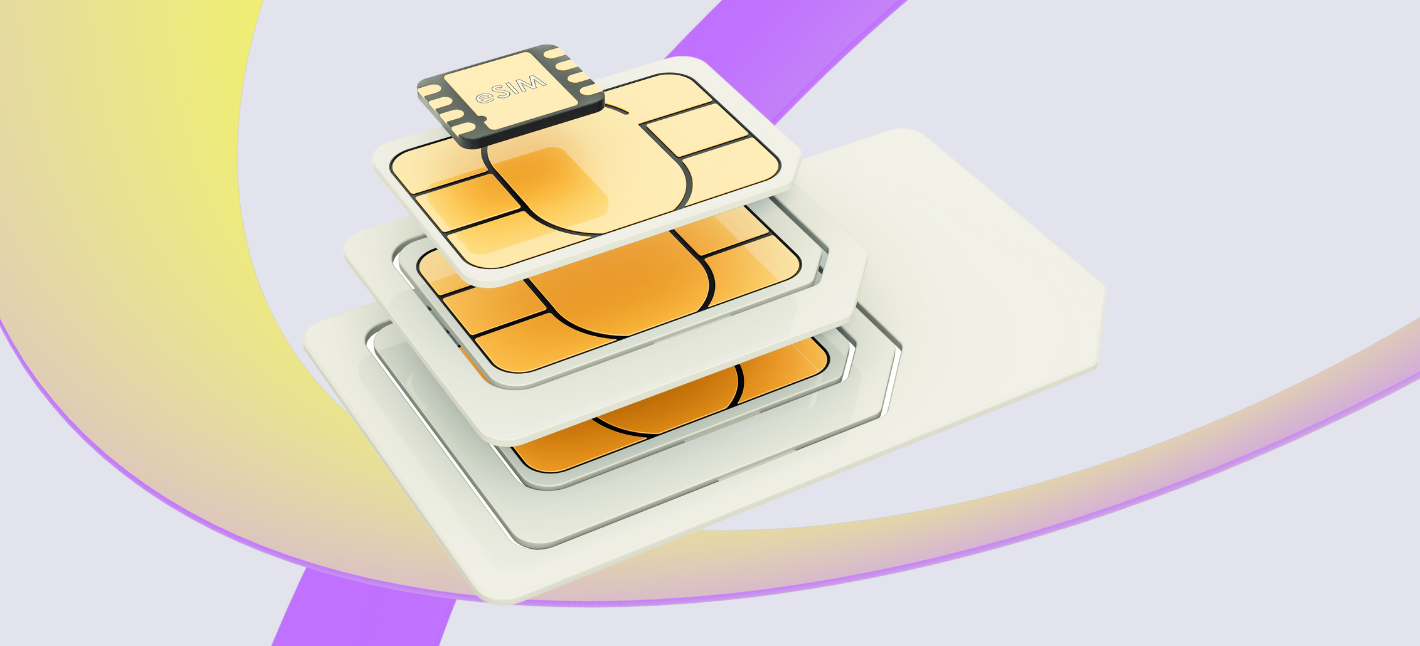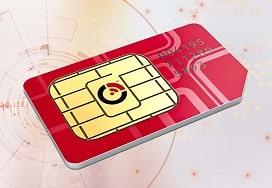Cellular Iot Sim Card The best IoT SIM card
The panorama of Internet of Things (IoT) connectivity has grown more and more advanced, making the selection of communication technologies important for builders and companies. Two prominent solutions in this field are Wi-Fi and Low Power Wide Area Networks (LPWAN). Both technologies serve the purpose of connecting devices, but they cater to different use cases, providing unique benefits and limitations.
Wi-Fi is ubiquitous, found in homes, offices, and public spaces. It offers high data throughput, permitting gadgets to speak effectively. This makes Wi-Fi suitable for purposes that require real-time data transmission, such as video streaming or online gaming. The excessive bandwidth of Wi-Fi allows seamless connectivity for numerous devices within shut vary, making certain quick and reliable access to the web.
However, the dependence on proximity could be a important disadvantage. Wi-Fi sometimes requires devices to be inside a restricted range of a router or access level. As a outcome, it may not be best for applications needing long-range connectivity, such as agricultural sensors unfold across vast fields. Moreover, Wi-Fi networks usually require appreciable power, making them much less appropriate for battery-operated units, which are prevalent in IoT functions.
On the opposite hand, LPWAN technologies like LoRaWAN and Sigfox are designed to connect gadgets over longer distances whereas consuming minimal power. These networks can transmit information over a quantity of kilometers, making them advantageous for rural and remote functions. LPWAN is especially effective in scenarios the place intermittent knowledge transmission is adequate and extended battery life is prioritized.
4g Iot Sim Card Fastest growing multi-network IoT SIM
Low power consumption is considered one of the foremost advantages of LPWAN. Devices deployed in hard-to-reach areas or people who need to function over several years without battery substitute benefit greatly from this effectivity. This advantage makes LPWAN a preferred alternative for applications such as smart agriculture, environmental monitoring, and asset monitoring.

Wi-Fi's higher data fee contributes to its widespread adoption in numerous scenarios. For functions requiring substantial bandwidth, similar to video surveillance, Wi-Fi proves to be indispensable. The technology helps lots of of megabits per second, which is an amazing benefit when high information transmission is crucial.
In contrast, whereas LPWAN excels in long-range communication, its data charges are significantly decrease, sometimes within the range of kilobits per second. This limitation makes it unsuitable for applications needing high-speed transmission. For instance, LPWAN might be much less effective for CCTV feeds or centralized knowledge centers that necessitate fixed and rapid knowledge flow.
Both technologies grapple with scalability of their distinctive ways. Wi-Fi networks can turn into congested as the variety of devices will increase, leading to efficiency issues as a end result of interference. Enhanced protocols and hardware can alleviate some problems, however the basic limitations remain. In distinction, LPWAN is designed to support hundreds of devices in a single network with out significant degradation in efficiency.
Iot Board With Sim Card Prepaid 4G SIM Card Data
Moreover, the infrastructure required for each expertise varies considerably. Establishing a Wi-Fi community requires routers, access points, and infrequently, a strong backhaul connection to the web. While LPWAN also wants gateways for its gadgets to communicate with the cloud, the deployment is much less intensive and can cowl bigger areas with fewer access factors. This issue simplifies the setup, especially in rural or less-developed areas.
Security also presents totally different challenges for each technologies (Iot Sim Card South Africa). Wi-Fi networks, despite being extensively regarded, could be susceptible to a spread of assaults, together with unauthorized entry and discount of service high quality through interference. Though modern encryption methods help mitigate these risks, the issue remains pertinent.
Iot Sim Card South Africa Prepaid IoT SIM Netherlands
LPWAN, while less targeted, isn't resistant to safety vulnerabilities. As a extra moderen expertise, the method to securing LPWAN networks remains to be evolving, which can present challenges for businesses concerned about data integrity and confidentiality. A solid security framework is essential for both technologies to ensure seamless and secure IoT connectivity.
Another consideration is the potential for integration. Wi-Fi is versatile and supported by a plethora of devices, making it easy to integrate into existing techniques. This compatibility simplifies deployment for a lot of companies in search of to modernize their operations.
LPWAN, nonetheless, is gaining traction as a result of its distinctive choices, making it a viable different for specialised purposes that require its specific functionalities. The integration of LPWAN into present systems will not be as straightforward as Wi-Fi, yet its advantages usually outweigh the preliminary hurdles.
Global Sim Card Iot Unlimited IoT SIM Card 12 Month Prepaid Service
Cost could be a decisive issue for companies evaluating their choices. Setting up a complete Wi-Fi community can entail important funding in hardware and infrastructure, particularly for large-scale deployments. The maintenance costs can also be a concern, given the need for ongoing assist and upgrades to the gadgets used.
In distinction, LPWAN provides a less expensive answer in situations requiring extensive deployment over a wide space. Its low energy consumption means decreased operational site web prices, mainly if devices solely transmit small quantities of knowledge occasionally.
Best Iot Sim Card IoT Data SIM Card
Ultimately, the choice between Wi-Fi and LPWAN for IoT connectivity largely depends on particular use circumstances and necessities. Wi-Fi is superb for high-bandwidth purposes within short-range environments, while LPWAN stands out for long-range, low-power applications perfect for rural and distant setups.
In conclusion, each Wi-Fi and LPWAN have significant roles in the evolving IoT panorama. Understanding their capabilities, limitations, and use circumstances will allow businesses and developers to make knowledgeable choices. By aligning know-how with specific wants, organizations can harness the total potential of IoT, making certain efficient and reliable connectivity for his or her units.
- Wi-Fi provides high data switch charges, making it suitable for functions requiring real-time information streaming, while LPWAN focuses on long-range communication with minimal power consumption.
- LPWAN networks are designed for low-bandwidth functions, which is right for devices that transmit small quantities of knowledge infrequently, in distinction to Wi-Fi that supports heavier data hundreds.
- The range of LPWAN can lengthen several kilometers, making it perfect for rural deployments, whereas Wi-Fi usually operates successfully within a restricted range, usually constrained to building areas.
- Compared to Wi-Fi, LPWAN operates on unlicensed frequency bands, which may lead to cost-effective deployment, whereas Wi-Fi may require adherence to particular laws and bandwidth allocation.
- Battery life for LPWAN gadgets can prolong to several years, catering to purposes where system maintenance is impractical, whereas Wi-Fi devices usually require more frequent recharging or energy supply.
- Security protocols differ, with Wi-Fi typically using robust encryption strategies suited for high-speed networks, whereas LPWAN could prioritize easier approaches to accommodate decrease processing capabilities in units.
- In areas with dense networks, Wi-Fi can expertise congestion, affecting performance, whereas LPWAN is designed to handle many units concurrently without important interference.
- Deployment costs might vary, as establishing Wi-Fi networks can contain substantial infrastructure, whereas LPWAN solutions can typically be cheaper and quicker to deploy.
- Scalability is a key benefit of LPWAN, enabling seamless addition of new units over expansive areas and not utilizing a corresponding increase in infrastructure complexity seen with Wi-Fi.
- Wi-Fi usually requires person authentication and management of connections, whereas LPWAN simplifies system integration, making it simpler for thousands of units to attach effortlessly.
What is the primary difference between Wi-Fi and LPWAN when it comes to range?
Global Sim Card Iot IoT SIM vs Normal SIM
Wi-Fi normally covers a smaller area, usually within a couple of hundred meters, relying on the environment. In contrast, LPWAN is designed for long-range communication, able to reaching several kilometers, making it suitable for widespread IoT purposes.

How does energy consumption compare between Wi-Fi and LPWAN for IoT devices?
Iot M2m Sim Card IoT SIM Card Connectivity
Wi-Fi tends to consume extra power due to greater information charges and continuous communication necessities. LPWAN, on the other hand, is optimized for low-power usage, permitting devices to final a number of years on small batteries, which is crucial for lots of IoT applications.
What forms of IoT functions are finest suited to Wi-Fi versus LPWAN?

Wi-Fi is ideal for applications requiring excessive information throughput and low latency, like video streaming or real-time management. LPWAN fits purposes that exchange small amounts of knowledge occasionally, such as sensor monitoring or environmental monitoring, the place lengthy battery life is a priority.
4g Iot Sim Card IoT SIM cards
Can Wi-Fi and LPWAN technologies coexist in an IoT deployment?
Yes, they will complement one another. Wi-Fi can deal with high-bandwidth duties within localized areas, whereas LPWAN can cowl distant locations for low-bandwidth, long-range communications, here making a complete IoT ecosystem.
What are the safety implications of utilizing Wi-Fi versus LPWAN?
Wi-Fi techniques could be more susceptible to hacking because of their wide use and accessible nature. In contrast, LPWAN sometimes employs built-in security measures like encryption and authentication, making it more resilient towards unauthorized access, though proper implementation is crucial (Hologram Global Iot Sim Card).
Iot Sim copyright What Is An IoT SIM Card?
How does the price of deployment compare between Wi-Fi and LPWAN?
Wi-Fi deployments may incur larger infrastructure costs as a outcome of need for a quantity of access points to realize full protection. LPWAN is commonly more cost-effective for wide-ranging purposes, because it requires fewer gateways and less maintenance over time.
What are the scalability considerations for Wi-Fi and LPWAN in IoT networks?
Wi-Fi networks can turn into congested with many gadgets, resulting in reduced performance because the variety of connections increases. LPWAN is designed to deal with 1000's of gadgets over huge areas without vital degradation in service, making it extra scalable for big IoT deployments.
Prepaid Iot Sim Card IoT SIMs Embedded Connectivity
Which connectivity option is extra dependable in urban versus rural environments?
In city areas, Wi-Fi may face interference from quite a few units and obstacles, affecting reliability. LPWAN often performs better in each urban and rural settings, as it penetrates higher via structures and covers bigger distances, guaranteeing a more stable connection.
Is there a major difference in data switch velocity between Wi-Fi and LPWAN?

Yes, Wi-Fi offers a lot greater data transfer charges, typically in the Mbps vary, suitable for high-bandwidth applications. LPWAN, nonetheless, focuses on lower bandwidth with speeds typically measured in kbps, sufficing for restricted knowledge transmission requirements in plenty of IoT use instances.